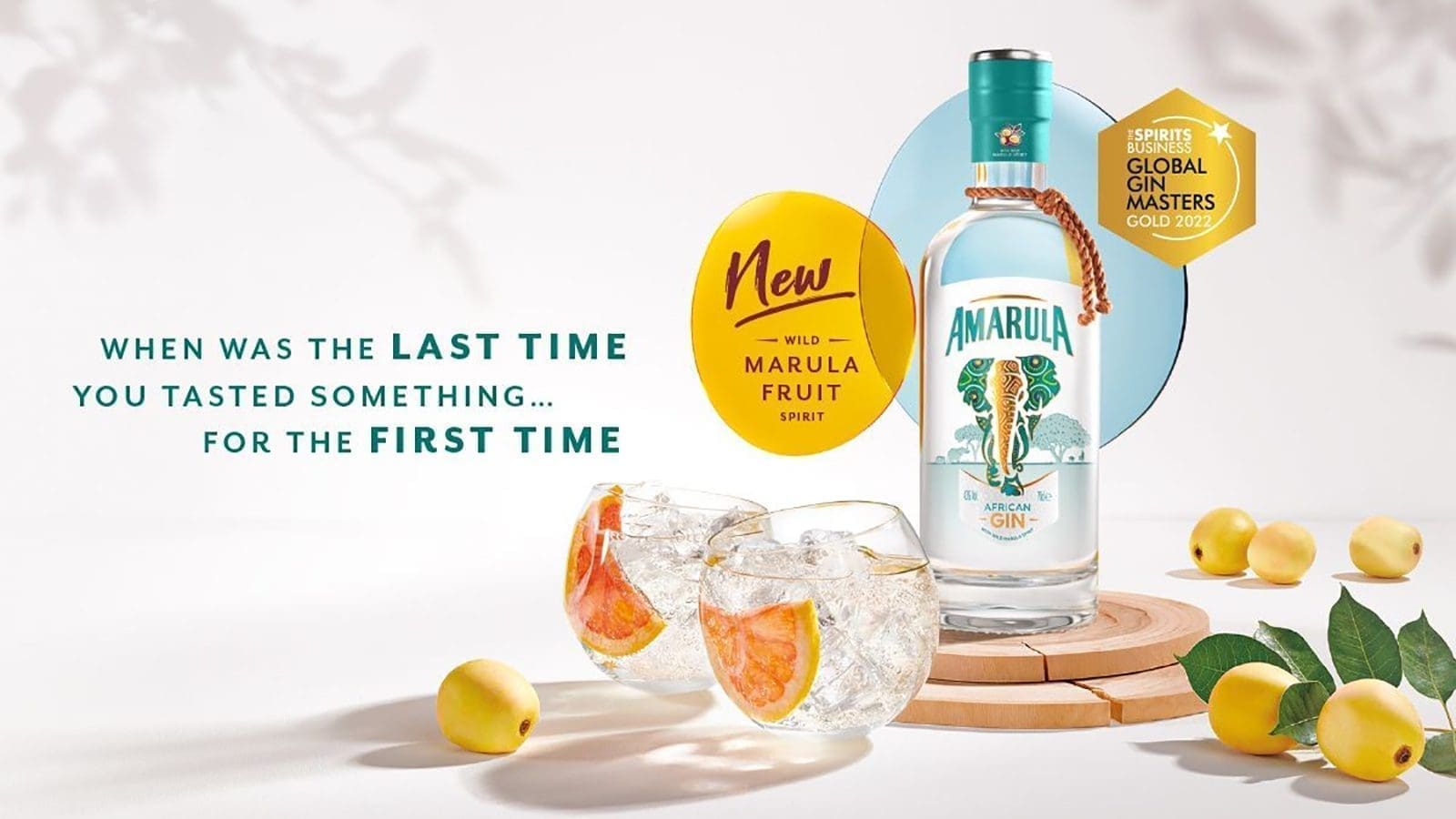SOUTH AFRICA – South Africa’s famous cream liqueur brand Amarula, has expanded its product line with launch of Amarula African Gin.
According to the brand owned by Distell, this is the first and only gin made from a spirit distilled from wild, hand-harvested marula fruit.
The launch of the new drink follows the company’s debut of a vegan variant of its cream liqueur dubbed Amarula Vegan targeting the growing proportion of consumers that are adopting plant-based diets.
Amarula African Gin’s gentle juniper notes, subtle orange blossom and peppery Ghanaian grains of paradise perfectly complement the exotic marula fruit.
With a light, sweet orange flourish and spicy backbone – this refreshing, uniquely African gin is made for savouring and sharing.
Skilfully crafted, the gin has already bagged its first award, a gold standard in Gin Masters 2022 super premium category.
Gin demand grows in South Africa
Launch of the unique, complex, yet delicate spirit is timely as Gin is now the second most popular liquor category in South Africa, having overtaken vodka and now positioning itself firmly on the heels of whisky.
The spirit – whether 43% alcohol by volume (abv) or ready-mixed – is consistently gaining ground and tempting consumers away from other more mainstream alcohol beverages.
For many years, the two leading liquor categories in South Africa were whisky and brandy. In year 2018/2019, according to Edward Snell Marketing Director – Melanie Campbell, vodka matched brandy in value and in June 2020, gin sales exceeded vodka and in 2021 it became 3% larger in value, making it the second largest spirit category in the country.
In 2020, spirits accounted for 21.4% of the industry value, but there was a significant shift over the next 12 months and spirits – in general – account for 27.2% of the alcohol market value.
Consumption of the liquid is reported to have grown 50% and distilleries expanding to 65 in 2019, and still counting.
Gin consumption is also growing steadily across the globe as by 2023, the category is expected to see a volume CAGR of 4.2% globally, with most growth coming from non-traditional and emerging markets, such as Japan, Nigeria, Mexico, Brazil, South Africa and Russia.
Gin demand falters in established markets
IWSR points out that despite the expected growth in non-traditional gin markets, the gin boom will cool in established markets.
Spain, the world’s leading consumer of most gin per capita, and the UK, the fourth in the same ranking, have now reached ‘peak gin’, with volume consumption plateauing.
IWSR forecasts the total UK gin market to decline at a CAGR of 4% between 2021 and 2026, While Spain’s market is expected to stage a partial recovery, but with a relatively lackluster CAGR of 2% over the five-year period.
The drinks market analysis firm however notes that both markets are set to remain important sources of innovation and value for the category in the future.
In the report, IWSR noted that as flavor diversification has become a major trend driving gin for established brands, a new wave of locally produced premium gins is also exploiting growth opportunities in non-traditional gin markets, such as India and Brazil.
Liked this article? Subscribe to Food Business Africa News, our regular email newsletters with the latest news insights from Africa and the World’s food and agro-industry. SUBSCRIBE HERE.










